Science is amazing as it does wonders in our real life and around the world.
Today, Let’s explore “Egg in a Bottle”, which proves using simple science concepts anyone can put an egg into a bottle without touching it.
Yes, the egg can move into a bottle without any external help but with the help of science.
Objectives in this Science Activity
Using this experiment, children can learn,
1) Relation between Temperature and Pressure
2) Impact of air pressure on objects
3) Impact of air pressure in our daily activities
4) Properties of air
5) Density
Amazed! Yes, though the experiment is quick and simple, it carries a lot of scientific information to inspire young scientists.
Egg in a Bottle – Experiment
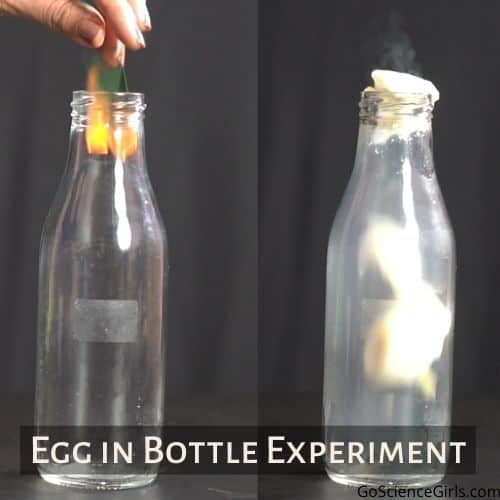
Supplies required
1) One glass container or jar. Make sure the opening of the glass jar is smaller than the size of a boiled egg because to fit the egg perfectly instead of slipping into the jar easily. Milk and Juice bottles work well for this purpose.
2) A small piece of Paper
3) Fire source i.e. a candle or lighter or a matchbox
4) One or two boiled eggs
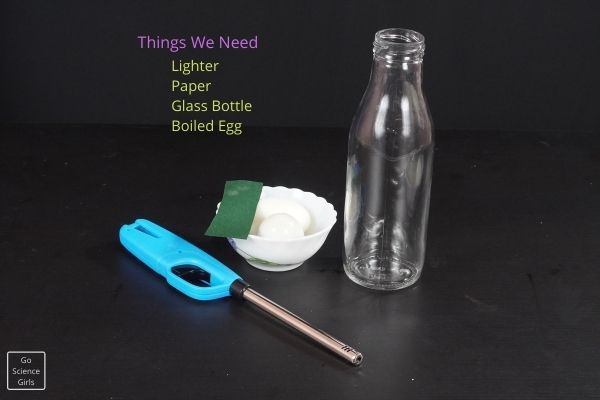
Preparations
Just before the experiment, pick fresh and raw eggs and boil them until they turn hard. Probably, this step takes 7-10 minutes.
Once boiled, peel off the outer shell part of the boiled egg and wash it under tap water to remove any hard remnants attached to the egg. Then, keep it aside on the experiment table.
Simple Step by Step Instructions
Step-1: Place a clean and transparent glass jar on the experiment table.
And then pick a piece of paper and burn it using a lighter. Please make sure the paper is folded into a strip such that it is easy for you to drop it into the jar bottle.

Step-2: When the paper catches fire, immediately drop it into the glass jar placed on the work table. You must drop the burning paper into the jar before the fire goes off.
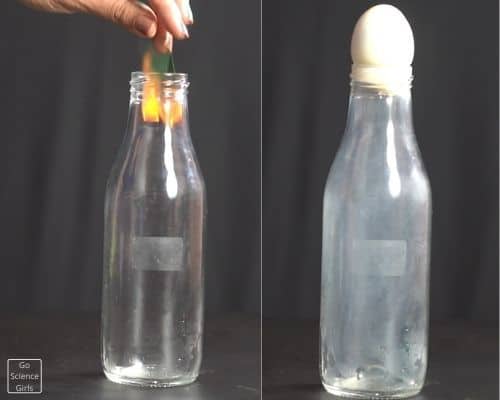
Step-3: Now, Place the hard-boiled egg on top of the glass jar opening perfectly. Then observe the results.
Results: You will observe the egg slowly moving into the bottle. At times, the egg will go into the glass bottle as it is without any breakages, but sometimes it may spill while squeezing into the bottle.
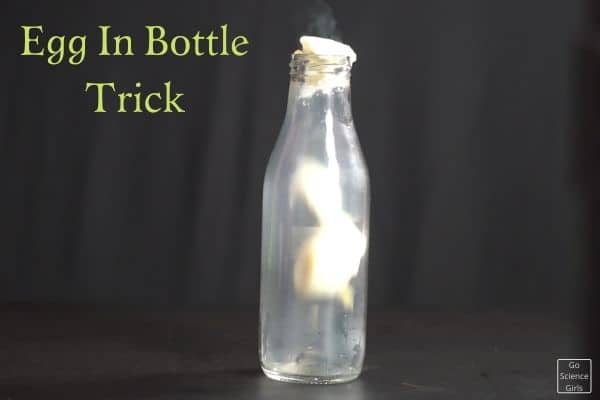
Note: If your egg fails or feeling difficult to slip down into the bottle, then you can apply vegetable oil around the neck of the bottle. Greasing oil helps the egg to move into the bottle easily.
Are you surprised watching an egg going into the bottle without any help from external forces? Do you want to learn that magical science trick? Then, let us discuss how this simple science activity worked out very well.
The Science Concepts behind The Egg in a Bottle Experiment
Air is a matter of substance, and hence it contains weight and other assets like density and pressure.
Generally, the air surrounding us or objects does not show any pressure because it surrounds with equal pressure.
But when there is additional pressure in the air, it starts showing its pressure through moving objects by push and pull trials.
In this science activity, we will observe that air shows its pressure when the opportunity is given.
Egg moving into the bottle without touching by external sources proves that air pressure is acting upon it. Let us discuss it in detail.
Before the experiment begins, the pressure of the air surrounding and inside the jar is the same as it is equally distributed.
That means the pressure inside and outside the glass bottle is the same at the beginning of the experiment.
But when we placed the burning paper into the glass bottle, the air inside the jar starts to expand. Because air molecules expand when it gets warmed up, and this is the specific characteristic of air.
And as soon as the egg is placed upon the opening of the glass bottle, the fire goes off, and the air molecules begin to cool down.
As the air molecules cool down, they start contracting themselves by lowering the air pressure inside the glass bottle.
That means there is a difference in the air pressure existing inside and outside the glass bottle.
Because there is less air pressure inside the bottle. The egg slowly squeezes into the bottle as the outside pressure pushes it from outside.
Yes, when the air molecules inside the bottle cool down, it offers more space to welcome additional air molecules.
In this process, the outside air molecules rush into the bottle to fill the spaces. So, it keeps pressure on the egg and helps it slip down into the bottle.
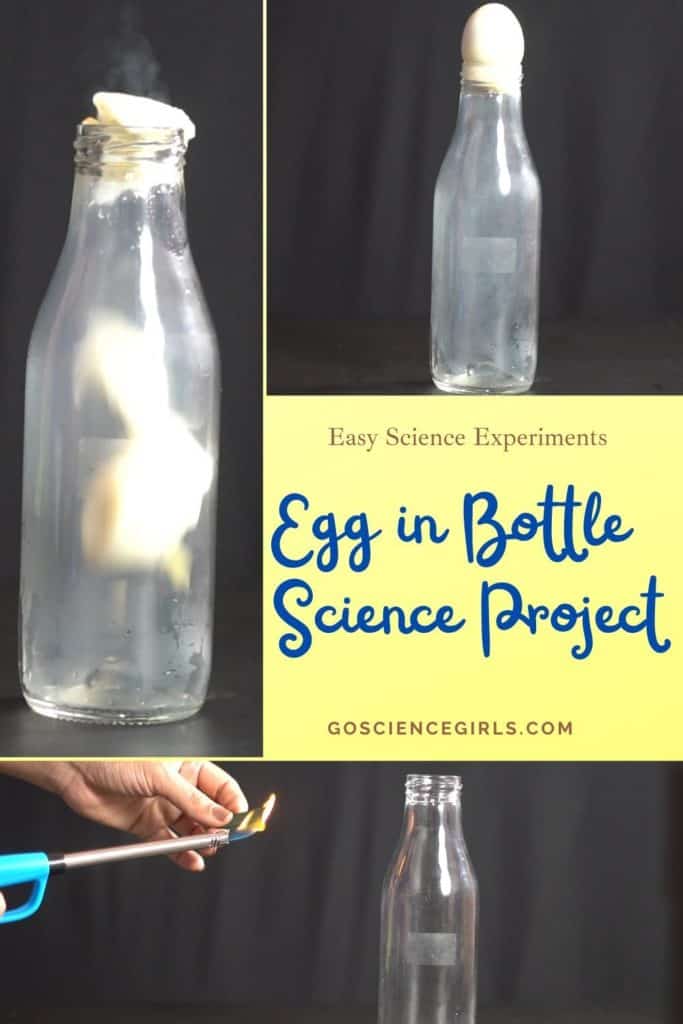
Extension Ideas
You can try out the experiment using other supplies such as boiling water and a balloon.
1) Use boiled water instead of paper inside the bottle and do the experiment
2) Try out using an inflated balloon filled with water in the place of a boiled egg.
Interesting Air Pressure Activities for Kids
Drip Drop Water Bottle – Science Behind Water Dispenser
Tips to Teachers
Here are the important questions a teacher can ask to make the students involved completely during the experiment. And to encourage them to participate in revealing and understanding the science behind the experiment.
1) What made an egg move into the bottle without touching it?
2) Why only eggs must be used in this science activity?
3) Are there any other possibilities to change the pressure of the air inside and outside the bottle?
4) Will the egg come out of the bottle again? If Yes, How?
5) What are the properties of air that made the egg move into the bottle?
Safety Measures
As we are dealing with fire, children need to be very careful while performing this activity. It is better to put on their safety guards even though an adult or teacher performs the activity. Adult supervision is a must when a child is performing this activity on his/her own.
